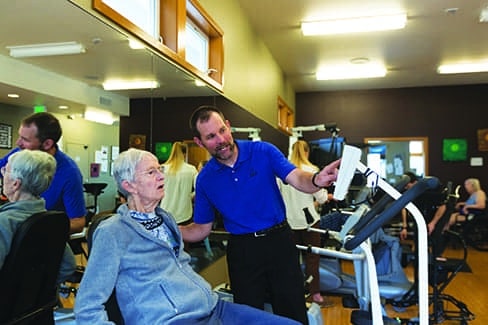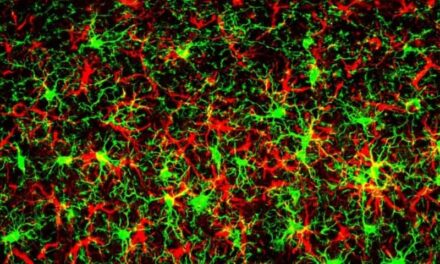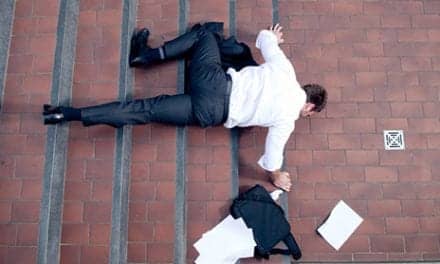
“Patient instruction, at every step, is key. People need to know what they are doing and why they are doing it. Without awareness, we do not pay attention. Without attention, we cannot reach therapeutic levels of intensity.” Mike Studer, PT, MHS, NCS, CEEAA, CWT, CSST
by Mike Studer, PT, MHS, NCS, CEEAA, CWT, CSST
The science of rehabilitating elderly patients who face weakness, imbalance, or both is improving and must continue to advance in both proficiency and popularity. The cost of functional dependence, due to caregiving expenses, or the medical care after a fall—is saddling the economy and Medicare to an increasing extent each year.
Physical therapists have the opportunity to serve a primary role in both the rehabilitation and the dissemination of this science. As such, this article will detail the science, detail the financial attributes, debunk the myths, and suggest avenues for meaningful change.
Evidence of Rehabilitative Efficacy in Geriatrics: Strength, Balance, Endurance Training
Myths of aging are both pervasive and insidious. Many healthcare professionals and more laypersons continue to hold the opinion that, “Falling is a part of aging,” and that, “An individual over 80 years cannot gain strength.” When elderly patients believe such opinions to be true, the effects of such thinking can subvert their health profoundly. The facts are, balance rehabilitation among the elderly, and strengthening for those who have lost conditioning—are effective. Some of the best citations for community engagements and professional education are included in the references section of this article.1-4
The Cost of Falls in the United States
Someone in the United States suffers injury from a fall every 11 seconds. The cost of medical care after a fall is more than $13,000 on average and, if the person is hospitalized, more than $30,000.5-9 If you were concerned about medical costs expanding in the United States, which would you prioritize—falls screening and the cost for four PT sessions…or the product of (one fall every) 11 seconds multiplied by the average cost of each x $13,000?
Presently, the annual cost for healthcare after a fall (including emergency, surgical, hospitalization, and rehabilitative) is more than $31 billion. By 2020, that cost is projected to exceed $43.8 billion.5,9
A Change in the Reimbursement Landscape
The financial incentives of preventing a fall, as detailed above, have now expanded into financial disincentives (penalties) of readmission due to a fall. Beginning in October 2008, Medicare stopped reimbursing hospitals for certain injuries if they were the result of a fall that occurred during hospitalization. In early 2016, the test markets for Medicare’s Commission on Joint Rehabilitation (CJR) program started, which essentially places a financial cap for the cost of postsurgical care.10 In the near future, more diagnoses are scheduled to be managed in this manner (cervical spinal fusion, acute MI, amputation, etc).10 Collectively, this program is known as the Bundled Payments for Care Improvement (BPCI). Reimbursement changes have not, and will not, stop there.
Estimates are that by 2019 we will see the full implementation of the Medicare and CHIP Reauthorization Act (MACRA). APTA Director of Regulatory Affairs Roshunda Drummond–Dye says that members of the profession can be assured that it’s only a matter of time.
“It’s clear that CMS hasn’t forgotten physical therapy,” she says. “MACRA is the first tangible step toward mandating a payment system that bases reimbursement on quality of care and outcomes.”11 Therapists should hold themselves accountable and take pride in standardized, objective measures and data collection regarding fall prevention and strengthening in the elderly. If what you are doing is not working—change it! If what you are doing is working—measure, refine, disseminate, and continue to apply it.
Training Intensity: Importance and Evidence
People older than 65 years, even those older than 85 years, can and should improve—if the science is applied with the appropriate dosage. No matter whether we are speaking of prehabilitation (before joint replacement) or falls prevention (when STEADI screening or fall history indicates the need), “dosage matters.” Frequency, intensity, time and type (FITT)12 must be considered in regard to strength, endurance, and balance training. It takes hard work to improve in any of these capacities, as Bette Davis states, “Old age is no place for sissies.” Many times, therapists under-dose or practice without sufficient intensity, allowing their own perceptions to limit the (intensity) of care, before the elderly patient’s body does.

“Repetitions matter. Focused attention to an activity’s specific purpose improves awareness and enhances the automaticity of getting each part to function optimally.” Brady Whetten, PT, DPT, GCS
Strength Training
Readers are directed to excellent literature on the science of strength training in the elderly.5-9,13-15 While it is an injustice to attempt to summarize the research here, a few points of application should be highlighted:
• Training should be 3x/week at a resistance that is 80% of a person’s one repetition maximum—for two sets of eight to 10 repetitions.
• Consider High Intensity Interval Training (HIIT) applications, especially in conditions of lower impact (water, body weight support, etc).
Some of the best clinic-based tools for strengthening and endurance training include rebounders, semi-recumbent ellipticals, resistance shuttles, universal gym sets, functional trainers, and body weight support treadmill systems. Regardless of the environment or the equipment used, the science and dosage must be applied, to realize each person’s true potential.
Strengthening does not have to be equipment-based. Consider 10 repetitions of sitting to standing with some intensity, three times per week. This can be adjusted to include upper extremity support, at different heights, with controlled eccentric loading, etc.
With bedrest after medical complications, pneumonia, fall, or surgery—the ill-effects of disuse atrophy are more prevalent among the elderly. However, there appears to be some confusion when it comes to seeing a difference between “getting stronger with aging” and “recovering strength in old age.”
There is no disputing that the aging process includes sarcopenia, decreased force production, and loss of both type I and type II muscle fibers. So, “Do we lose strength as we age?” Yes, we do. However, “Can seniors regain strength after inactivity or medical complication?” Yes, both are true. Rehabilitation plays a key role after periods of deconditioning, or in response to reversing the effects of disuse. We need to recognize, apply, and educate about these facts.
Endurance Training: Muscular Endurance and Cardiovascular
As with strength training, I will not attempt a meta-analysis about endurance training in the elderly here. Some of these cited articles have defined the science of endurance “dosage.” A summary includes references 5-9 and 13-15.
• Muscular endurance training includes 3-5x/week at a resistance that is 50% to 60% of one repetition maximum, for two to three sets of 15 to 20 repetitions.
• Cardiovascular and muscular endurance training programs can include HIIT applications—using a preferred modality of exercise: dance, swimming, walking, running, elliptical, cycling, etc.
• Patients can benefit ideally from 30 minutes of sustained exercise, or an accumulation of 30 minutes, spread throughout the day (for example, three sets of 10-minute bouts).
Again, as with the confusion about gaining strength with aging, we debunk the myths and clarify, “Do we lose aerobic capacity as we age?” Yes, we do, as a function of heart rate, cardiac output and VO2 max. However, “Can seniors regain endurance” after periods of deconditioning, or in response to reversing the effects of inactivity—again, yes.
Balance Training
Who is at risk for falls? The science of balance rehabilitation is becoming more sophisticated each month, through research on valid testing/screening, through technology for examination, and technological advances in treatment. The Centers for Disease Control and Prevention (CDC) released a comprehensive approach to falls screening, called Stopping Elderly Accidental Deaths and Injuries (STEADI), in 2012. Using fall history, performance on a three-item battery, and other risk factor calculations, the STEADI is quick, reliable, and user-friendly.16
Recent technological advances in balance testing have allowed physical therapists to provide a more sophisticated and individualized application of balance training. Some of the most significant advances have included forceplate-enabled treadmills, real-time biofeedback in gait and during balance training (information on pathway, symmetry, and sway), and wearable accelerometers. In all, clinics—not just laboratories—can now more accurately define the parameters of a balance problem, and more precisely rehabilitate the same.
We know that balance activities must be processed regularly to be effective. Some citations report 50 hours of practice, others report 1-7x/week. We do have more to learn about the science of dosage both for frequency and difficulty.
What we do know is that with the aging process, even community-dwelling elderly experience a reduction in sensory and motor conduction velocity. This leads to increased reaction times. When combined with sarcopenia—this means reduced power (strength/time) for a quick balance reaction. Balance cannot be trained in isolation from strength and endurance.
Summary/Conclusion
If we continue to perpetrate the message that failing function is a part of aging that we cannot impact, we create a self-fulfilling prophecy for all of our community-dwelling elderly. We can do better to help those who have lost strength, endurance, or balance. We must commit to them, or they have no reason to commit to the work that it will take to improve. Perhaps, it is time to change the phrase and meaning of, “Old habits die hard,” to, “Those with good habits live long.” RM
Mike Studer, PT, MHS, NCS, CEEAA, CWT, CSST, is president and co-owner of Northwest Rehabilitation Associates. Studer is recent past chair of the Geriatric Section’s Balance and Falls Special Interest Group. He has been board-certified as a clinical specialist in neurologic physical therapy since 1995. In 2011, Studer received the Neurology Section Clinician of the Year from the APTA and received the same award from the Geriatric Section in 2014. For more information, contact [email protected].
References
1. Borde R, Hortobágyi T, Granacher U. Dose–response relationships of resistance training in healthy old adults: a systematic review and meta-analysis. Sports Med. 2015;45(12):1693-1720.
2. Gschwind YJ, Kressig RW, Lacroix A, et al. A best practice fall prevention exercise program to improve balance, strength/power, and psychosocial health in older adults: study protocol for a randomized controlled trial. BMC Geriatr. 2013;13:105.
3. Wang X, Ma Y, Wang J, et al. Mobility and muscle strength together are more strongly correlated with falls in suburb-dwelling older Chinese. Sci Rep. 2016;6:25420.
4. Paterson DH, Warburton DE. Physical activity and functional limitations in older adults: a systematic review related to Canada’s physical activity guidelines. Int J Behav Nutr Phys Act. 2010;7:38.
5. Burns ER, Stevens JA, Lee R. The direct costs of fatal and non-fatal falls among older adults—United States. J Safety Res. 2016;58:99-103.
6. Centers for Disease Control and Prevention, National Center for Injury Prevention and Control. Web–based Injury Statistics Query and Reporting System (WISQARS) [online]. Accessed August 5, 2016.
7. Carroll NV, Slattum PW, Cox FM. The cost of falls among the community-dwelling elderly. J Manag Care Pharm. 2005;11(4):307-316.
8. O’Loughlin JL, Robitaille Y, Boivin JF, Suissa S. Incidence of and risk factors for falls and injurious falls among the community-dwelling elderly. Am J Epidemiol. 1993;137(3):342-354.
9. Alexander BH, Rivara FP, Wolf ME. The cost and frequency of hospitalization for fall–related injuries in older adults. Am J Public Health. 1992;82(7):1020-1023.
10. Bundled Payments for Care Improvement (BPCI) Initiative. CMS.gov. Available at: https://innovation.cms.gov/initiatives/bundled-payments/. Accessed January 11, 2017.
11. Drummond-Dye R. Medicare payment and compliance: what you need to know about the year ahead. Webinar. American Physical Therapy Association. December 8, 2016.
12. Blevins JS. Clinical exercise physiology: application and physiological principles. Med Sci Sports Exerc. 2004;36(8):1449.
13. American College of Sports Medicine Position Stand. Exercise and physical activity for older adults. Med Sci Sports Exerc. 1998;30(6):992-1008.
14. Theou O, Stathokostas L, Roland KP, et al. The effectiveness of exercise interventions for the management of frailty: a systematic review. J Aging Res. 2011;2011:569194
15. Liu CJ, Latham NK. Progressive resistance strength training for improving physical function in older adults. Cochrane Database Syst Rev. 2009 Jul 8;(3):CD002759.
16. Centers for Disease Control and Prevention. Stopping Elderly Accidents Deaths and Injuries STEADI. Available at: https://www.cdc.gov/steadi/index.html. Accessed January 11, 2017.




